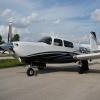-
Members Online
- Rmnpilot
- LANCECASPER
- Rizvon
- Flyler
- Scott H
- mooneyovation
- fuellevel
- 1980Mooney
- EricJ
- dzeleski
- Shadrach
- Nico1
- Jonmontesdeoca
- MikeOH
- Rogerg
- Skates97
- N201MKTurbo
- sdmideas
- PT20J
- Slick Nick
- bigmo
- N204TA
- NickG
- eman1200
- ohdub
- Bunti
- KSMooniac
- richardbrochu27
- redbaron1982
- Ivan
- jrwilson
- Pitbull2o08
- shawn-201zb
- Hank
- DC_Brasil
- BobbyH
- christaylor302
- lanejacobs84
- 00-Negative
- Guy123
- Andy95W
- Ragsf15e


Recommended Posts
Join the conversation
You can post now and register later. If you have an account, sign in now to post with your account.